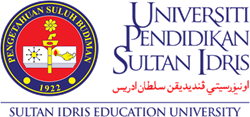The impact of using social networking sites for teaching and learning during emergency crisis
DOI:
https://doi.org/10.37134/jrpptte.vol14.1.1.2024Keywords:
Experiences, pandemic, social networking sites, teaching and learningAbstract
This study determined the impact of using social networking sites in teaching and learning during the covid-19 pandemic. There were 65 public school teachers in basic education in the Philippines who participated in this study. The study utilized both quantitative and qualitative methods to gather the data. Findings from the quantitative data revealed that the top two most used SNS for teaching and learning were YouTube and Facebook. Also, teachers’ main uses of SNS were for resources and knowledge sharing, educational and research purposes, collaborating with students and teachers, and communication and announcement. Based on the qualitative findings of the study, three themes emerged from the challenges encountered by the teachers which were: 1) Some information from the Social Networking Sites are unreliable; 2) Slow and unstable internet connectivity perennial issue; and 3) Limited use and access. It is concluded that SNS help in the delivery of teaching and learning in time of pandemic. It is also recommended the institutionalizing and adopting of SNS as support for teaching and learning even during the post-pandemic era.
Downloads
References
Azcarraga, A., & Peña, P. J. (2019, June 19-21). Technology and automation as sources of 21st-century firm productivity: The economics of slow internet connectivity in the Philippines [Conference Proceedings]. DLSU Research Congress 2019, De La Salle University, Manila, Philippines
Boholano, H. B., Jamon, B. E. V., Jamon , M. G. C., & Boholano, G. S. (2021). The lived experiences of basic education teachers during virtual conferences. Solid State Technology, 64(2), 2632-2644. https://doi.org/k3w2
Casillano, N. F. B. (2019). Challenges of implementing an e-learning platform in an internet struggling province in the Philippines. Indian Journal of Science and Technology, 12(10), 1-4. https://doi.org/k3w3
Chugh, R., & Ruhi, U. (2018). Social media in higher education: A literature review of Facebook. Education and Information Technologies, 23(2), 605-616. https://doi.org/gm4vsx
Clarke, V., & Braun, V. (2014). Thematic analysis. In T. Teo (Ed.), Encyclopedia of critical psychology (pp. 1947-1952). Springer. https://doi.org/gwsw
DeWitt, D., Norlidah Alias, Saedah Siraj, Mohd Yusaini Yaakub, Juhara Ayob, & Rosman Ishak. (2013). The potential of Youtube for teaching and learning in the performing arts. Procedia - Social and Behavioral Sciences, 103(2013), 1118-1126. https://doi.org/gqdr4x
Fabito, B. S., Trillanes, A. O., & Sarmiento, J. R. (2020). Barriers and challenges of computing students in an online learning environment: Insights from one private university in the Philippines. International Journal of Computing Sciences Research, 5(1), 441-458. https://doi.org/k3qz
Govindarajan, S. D. (2022). The implication of practising blended learning, and conventional learning towards student’s achievement and attitude. Journal of Research, Policy & Practice of Teachers and Teacher Education, 12(1), 99-116. https://ejournal.upsi.edu.my/index.php/JRPPTTE/article/view/5766
Kemp, S. (2021, January 27). Digital 2021: Global overview report. DataReportal. https://datareportal.com/reports/digital-2021-global-overview-report
Ketari, L. M., & Khanum, M. A. (2013). Impact of Facebook usage on the academic grades: A case study. Journal of Computing, 5(1), 44-48. https://www.journalofcomputing.org/volume-5-issue-1-january-2013
Koohikamali, M., & Sidorova, A. (2017). Information re-sharing on social network sites in the age of fake news. Informing Science: The International Journal of an Emerging Transdiscipline, 20, 215-235. https://doi.org/k3wv
Liu, Y. (2023). TikTok’s Influence on Education. Journal of Education, Humanities and Social Sciences, 8, 277-280.
Malik Mubasher Hassan, Mirza Waseem Hussain, & Tabasum Mirza. (2020). A critical review by teachers on the online teaching-learning during the COVID-19. International Journal of Education and Management Engineering, 10(5), 17-27. https://doi.org/k3q2
Munshi, S. A., Mostafa, M. G., & Alam, M. M. (2018). Uses of social networking sites among postgraduate students at University of Rajshahi, Bangladesh: A study. DESIDOC Journal of Library & Information Technology, 38(1), 34-30. https://doi.org/k5dx
Nkatha, M. G., Kimwele, M., & Okeyo, G. (2015). The use of social networking sites for learning in institutions of higher learning. International Journal of Scientific and Technology Research, 4(12), 51-56.
Pastor, C. K. (2020). Sentiment analysis on synchronous online delivery of instruction due to extreme community quarantine in the Philippines caused by COVID-19 pandemic. Asian Journal of Multidisciplinary Studies, 3(1), 1-6. http://dx.doi.org/10.2139/ssrn.3574385
Saha, S. M., Pranty, S. A., Rana, M. J., SlamI, M. J., & Hossain, M. E. (2022). Teaching during a pandemic: do university teachers prefer online teaching? Heliyon, 8(1), 1-9. https://doi.org/grw758
Sedigheh Moghavvemi, Ainin Sulaiman, Noor Ismawati Jaafar, & Nafisa Kasem. (2018). Social media as a complementary learning tool for teaching and learning: The case of YouTube. The International Journal of Management Education, 16(1), 37-42. https://doi.org/ghqj6j
Somosot, I. S. (2022). We can make it: A probabilistic analysis on the satisfaction in flexible learning. Journal of Research, Policy & Practice of Teachers and Teacher Education, 12(2), 1-11. https://ojs.upsi.edu.my/index.php/JRPPTTE/article/view/6269
Statista. (2023). Leading social media platforms used each month by internet users in the Philippines as of 3rd quarter 2022. https://www.statista.com/statistics/1127983/philippines-leading-social-media-platforms/
Sulaiman Ainin, Naqshbandi, M. M., Moghavvemi, S., & Noor Ismawati Jaafar. (2015). Facebook usage, socialization and academic performance. Computers & Education, 83, 64-73. https://doi.org/f64fzc
Tran, P. (2022). Social networking for language teaching and learning. In H. Mohebbi & C. Coombe (Eds.), Research Questions in Language Education and Applied Linguistics: A Reference Guide (pp. 669-673). Springer International Publishing. https://doi.org/k3w5
Williams, A. E., & Woodacre, M. A. (2016). The possibilities and perils of academic social networking sites. Online Information Review, 40(2), 282-294. https://doi.org/f8mpzv
Downloads
Published
How to Cite
Issue
Section
License
Copyright (c) 2024 Helen B Boholano, Bernard Evangelicom V. Jamonr, Mary Grace C. Jamon, Tizza Marie M. Navarro

This work is licensed under a Creative Commons Attribution-NonCommercial-ShareAlike 4.0 International License.




